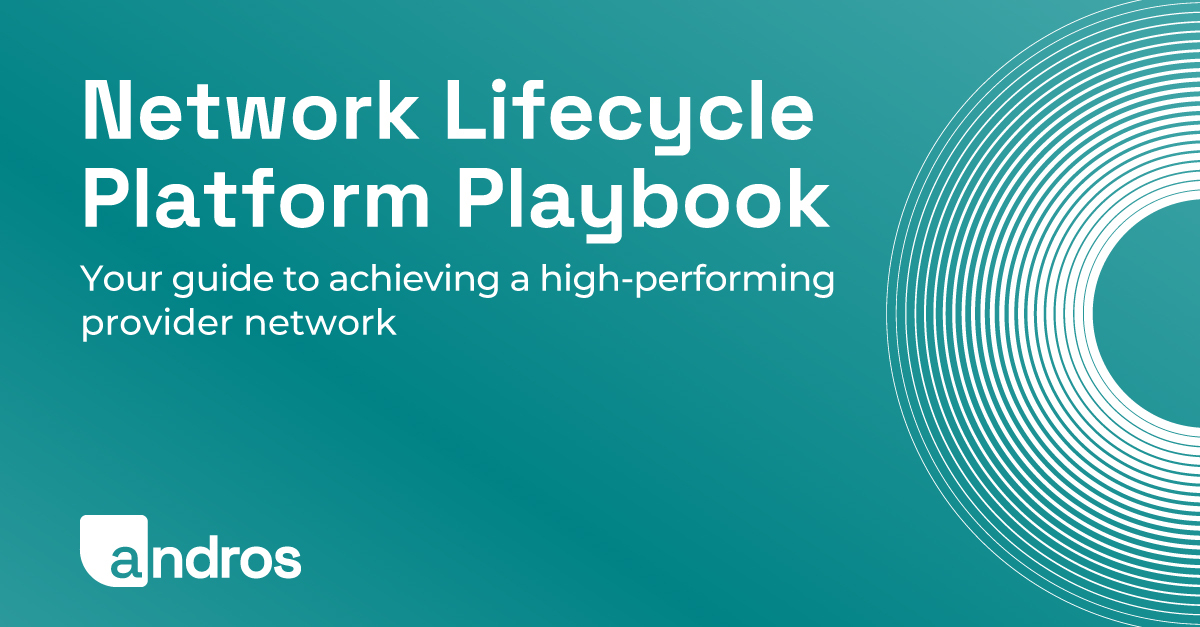When it comes to building and managing a high-performing provider network, it’s easy to think of Provider Data Management (PDM) and the Network Lifecycle Platform (NLP) as interchangeable.
While the two are closely connected, they serve very different purposes, and understanding those differences is essential. Let’s explore the difference between the two, why it matters, and how they work together to power high-performing networks.
Health plans that want to build stronger, more agile networks are looking beyond traditional Provider Data Management and are investing in an advanced Network Lifecycle Platform.
Provider Data Management: The foundation of provider data integrity
Provider Data Management is all about the truth. It’s the process of capturing, validating, and maintaining accurate provider information over time—from credentials and specialities to practice locations, affiliations, and availability.
When done well, PDM ensures this data is clean, consistent, and governed. It creates a reliable foundation that other teams and tools can depend on. Without effective PDM, even the most advanced tech in your network operation are working with flawed inputs.
Network Lifecycle Platform: The connected system for the entire network lifecycle
While PDM is foundational, the Network Lifecycle Platform operates at a broader level. It’s the connector that unifies provider network strategy and operations—design, contracting, credentialing, onboarding, monitoring, performance management—into a cohesive, data-powered system.
The role of an NLP isn’t just to store or manage data, it’s designed to activate it. It ensures that the right data flows to the right people and systems at the right time, helping teams make faster, smarter decisions across the entire network lifecycle.
PDM vs. NLP: Key differences at a glance
| Provider Data Management (PDM) | Network Lifecycle Platform (NLP) |
|---|---|
| Maintains accurate provider data | Uses data to drive lifecycle operations |
| Supports point-in-time needs | Powers continuous, coordinated workflows |
| Reduces risk through data integrity | Enhances agility, visibility, and accountability across teams |
| Operates as a function | Operates as a system |
How Provider Data Management powers the NLP
PDM is one of many vital engines within the Network Lifecycle Platform. An advanced NLP enhances PDM by breaking down silos, connecting data to action, and turning static records into dynamic intelligence. It helps ensure that validated provider data doesn’t just in a system, but it flows, informs, and drives real-time decisions across your network. In short, PDM is necessary, but NLP is transformative.
As provider networks grow more complex and member expectations rise, it’s no longer enough to manage provider data in isolation. A Network Lifecycle Platform brings PDM into a larger, connected ecosystem, and enables:
- Smarter network growth through data-informed contracting and recruitment
- Accelerated time to market by streamlining credentialing and onboarding
- Improved member access and experience with real-time data flowing to directories and care navigation tools
- Greater oversight and accountability through end-to-end visibility into provider status and performance
Looking to upgrade from isolated data management to full provider network orchestration? We’d love to show you how an advanced Network Lifecycle Platform makes it possible. Connect with Andros today.


